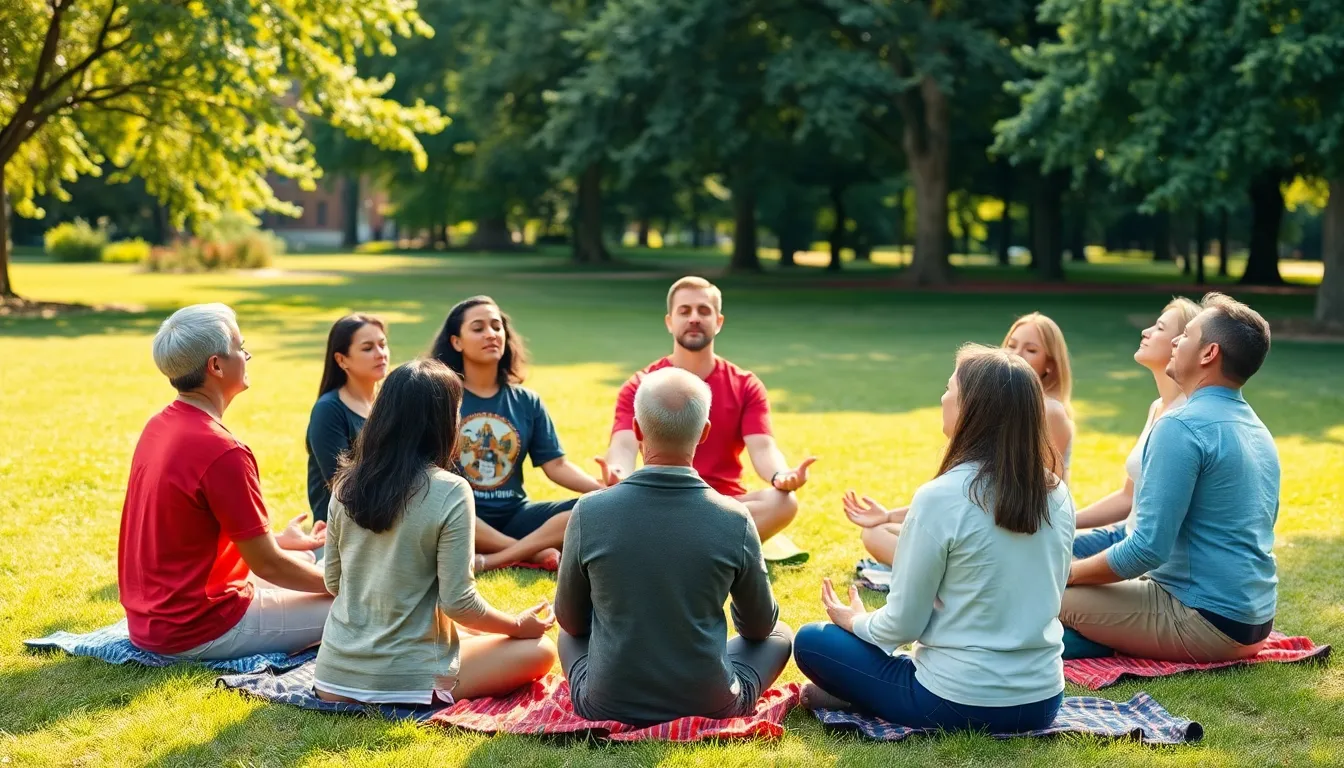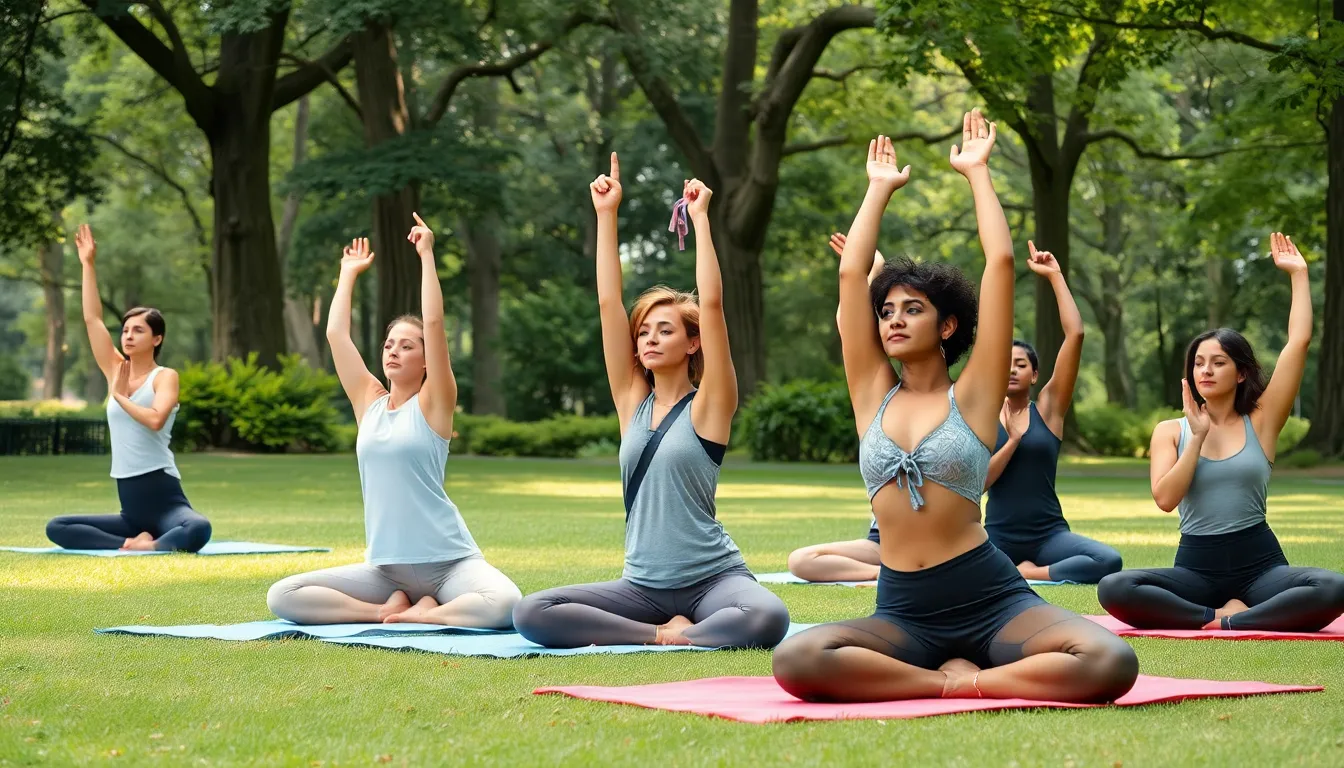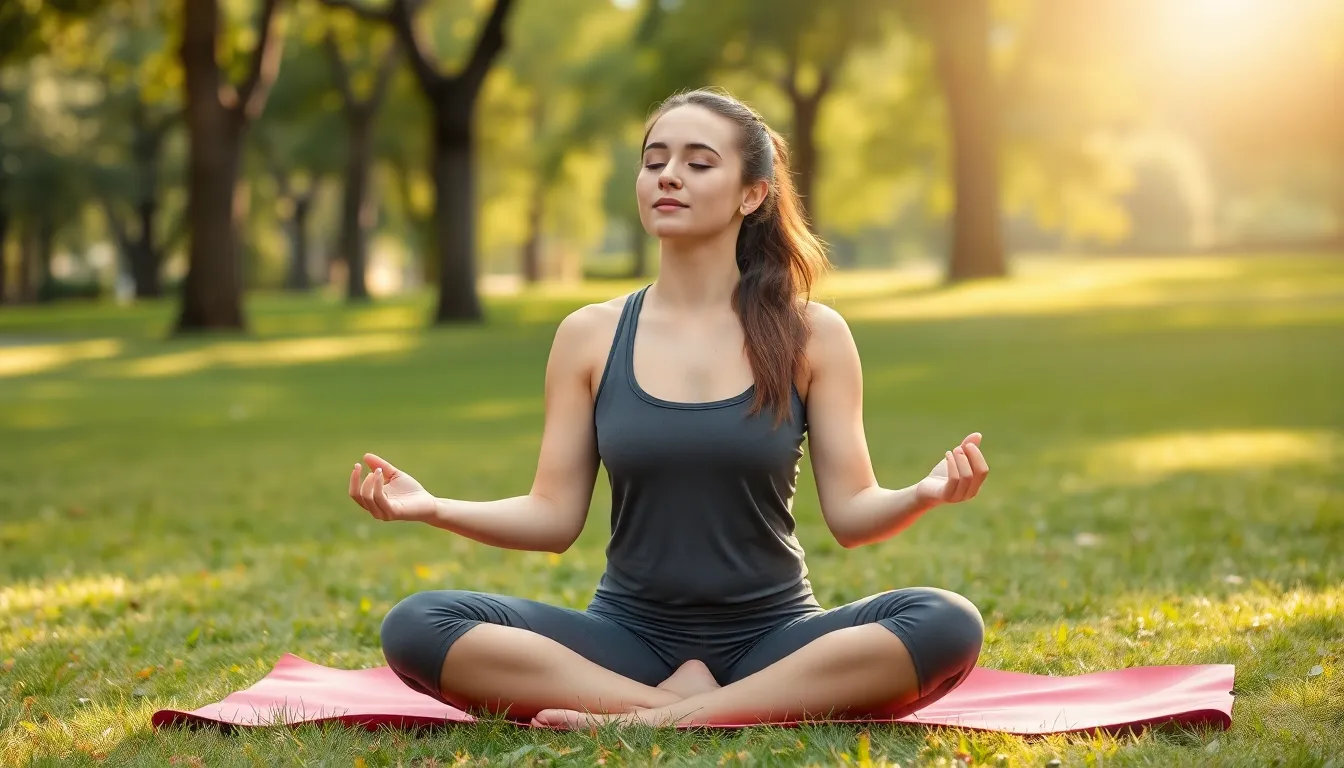In a world where stress often feels like a persistent roommate who never pays rent, mental health exercises can be the key to reclaiming your peace. Just like a good workout for the body, these exercises flex the mind, helping to build resilience and boost overall well-being. Who knew that taking care of your mental health could be as enjoyable as binge-watching your favorite show?
Table of Contents
ToggleWhat Are Mental Health Exercises?
Mental health exercises consist of various activities designed to support emotional and psychological well-being. Techniques such as mindfulness, meditation, and deep breathing focus on reducing stress and improving mental clarity. Engaging regularly in these exercises fosters resilience and enhances one’s capacity to handle life’s challenges.
Many exercises involve physical movement, including yoga and tai chi, which combine physical benefits with mental relaxation. Practicing gratitude through journaling can also promote a positive mindset and boost overall mood. Activities like visualization help individuals imagine positive outcomes, reinforcing confidence and reducing anxiety.
Structured routines in daily life contribute significantly to mental health improvement. Setting aside time each day for these exercises creates a foundation for long-term well-being. Applying cognitive-behavioral techniques enables individuals to identify and change negative thought patterns effectively.
Incorporating social connections into mental health routines, such as support groups or therapy sessions, adds another layer of emotional support. Social exercises enable sharing experiences and discovering coping strategies through communal interaction. Attending workshops or webinars focused on mental health also expands knowledge and provides practical skills.
Identify personal preferences among various activities to cultivate a customized mental health regimen. Experiment with different exercises until finding effective ones that resonate personally. Consistent practice leads to noticeable changes in mood and outlook, making it easier to enjoy life’s moments. With intentional efforts, mental health exercises transform into enjoyable practices that enhance overall quality of life.
Benefits of Mental Health Exercises


Mental health exercises offer numerous advantages for emotional and psychological well-being. Engaging in these activities can significantly impact daily life.
Improved Mood and Emotional Well-Being
Improved mood frequently results from incorporating mental health exercises into a routine. Regular practice of mindfulness and gratitude can elevate overall happiness levels. Increased emotional resilience is another benefit, enabling individuals to cope with challenges more effectively. Feeling a sense of accomplishment from completing these exercises contributes to a positive self-image. Practicing visualization techniques can foster optimistic thinking, further enhancing emotional states. Supportive group activities can amplify these effects through shared experiences and camaraderie.
Reduction in Anxiety and Stress Levels
Reduction in anxiety often occurs through consistent mental health exercises. Mindfulness techniques, which promote present-moment awareness, help calm racing thoughts. Incorporating deep breathing exercises fosters immediate relaxation responses within the body. Engaging in activities such as yoga and tai chi merges physical movement with mental peace, effectively reducing stress. Keeping a gratitude journal allows individuals to refocus on positive aspects of their lives, aiding in stress management. Building connections within support groups encourages shared coping strategies, enhancing overall well-being and mitigating anxiety.
Types of Mental Health Exercises
Various mental health exercises boost emotional resilience and overall well-being. Understanding these exercises promotes healthier lifestyles.
Mindfulness and Meditation Techniques
Mindfulness techniques focus on present-moment awareness, fostering calmness and clarity. Practices like meditation enhance focus, reduce stress, and improve emotional regulation. Guided meditations provide structure for beginners. Breathing exercises, such as the 4-7-8 technique, ease anxiety and promote relaxation. Engaging in these practices regularly cultivates better self-awareness and mindfulness.
Physical Activities and Exercise Routines
Physical activities significantly enhance mental health by reducing symptoms of anxiety and depression. Yoga incorporates movement and breathwork, promoting relaxation and mindfulness. Aerobic exercises, like jogging or cycling, release endorphins, which improve mood. Combining strength training with cardio boosts physical fitness and mental well-being. Daily movement practices contribute to emotional stability and resilience over time.
Creative Outlets and Hobbies
Creative outlets engage individuals and provide a healthy escape from stress. Painting, writing, or playing music can inspire emotional expression and improve mood. Hobbies encourage focus and concentration, diverting attention from negative thoughts. Crafting or cooking fosters a sense of accomplishment, enhancing self-esteem. Developing these interests offers a constructive way to cope with challenges while boosting mental health.
How to Incorporate Mental Health Exercises into Daily Life
Incorporating mental health exercises into daily routines enhances well-being and promotes emotional stability. Prioritizing these practices leads to significant improvements in quality of life.
Setting Realistic Goals
Establishing achievable goals ensures consistent practice of mental health exercises. Start with small, specific objectives, such as dedicating five minutes daily to mindfulness meditation. Progress can increase over time as confidence grows. Track accomplishments, noting positive changes in mood or stress levels. Celebrate milestones to reinforce motivation. Adapting these goals to fit individual lifestyles fosters a sense of ownership in the mental health journey.
Creating a Supportive Environment
Creating a conducive space for mental health exercises involves minimizing distractions and promoting comfort. Designate a quiet corner for practices such as yoga or deep breathing. Personalize the area with calming elements, like plants or soft lighting. Supportive environments enhance focus and relaxation. Encouraging family or friends to participate can foster a sense of community and shared experiences. Building connections reinforces commitment to mental health routines and creates opportunities for collective growth.



